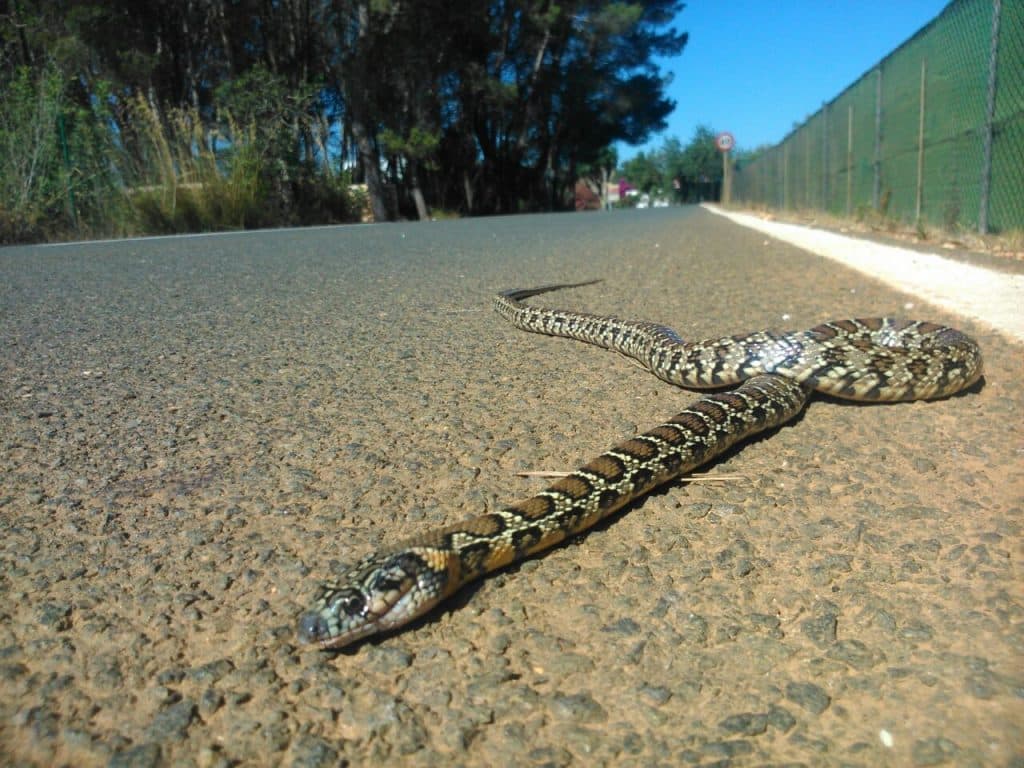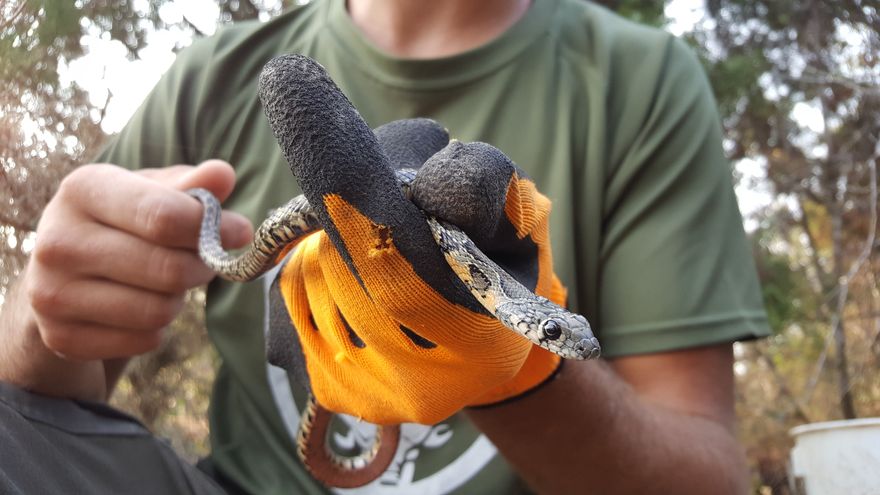Invasive snakes have already penetrated to the heart of one of the Pitiusas’ environmental jewels, the Natural Park of Ses Salines. A horseshoe snake (Hemorrhois hippocrepis) was discovered a week ago in the carreró de Can Blai, a trail that was adapted and opened to hikers a year ago and runs from the Toro Mar to the airport wall: “It was a beautiful day. They are currently hiding due to the cold, but when the weather improves, they will emerge to warm up “, explains Vicent Forteza, specialist at Ses Salines Natural Park.
It is not the first time ophidians have been spotted in Ibiza’s sensitive ecosystem: “We are aware of two previous snakes identified near Sant Francesc de s’Estany in the last two years.” One was discovered dead on the road in Ca na Maria. Another one, this time alive, was spotted a little more than a year ago in Can Mariano Fita, next to the discotheque DC 10, according to Forteza.

“It is true that snakes are making their way to the Natural Park. For the past four years, I’ve been concerned that they’re invading the wetlands, that we’re starting to see snakes in these regions, and that they’re hurting waterfowl nesting areas. Snakes pose a threat to more than only lizards”, the expert cautions. Specifically, a private individual alerted them a few years ago that he had spotted one in sa Sal Rossa, in sa Torre des Carregador, following which “the Natural Park managed five cages for a season.” They did not, however, capture any.
To detect them, the Cofib (Consorcio para la Recuperación de la Fauna de las Islas Balears) has erected sentinel traps throughout the Natural Park’s perimeter: “However, with such low densities of snakes, the traps do not operate as well as if they were high.” None of them fell into those cages.
However, there are a few. In addition to those spotted within the Natural Park, they have also been photographed within the airport’s perimeter, which borders the protected area: “They also trap specimens there as part of their animal management efforts. Some of them were on the airport runways. And, during the most recent construction project, when they entered with heavy machinery and dismantled walls and walls, they removed several deceased ones.”
Snakes sunbathing in ses Salines park
Víctor Colomar, Cofib’s veterinarian and the coordinator of the plan to stop the spread of ophidians in the Pitiusas, confirms what Forteza said: “In 2021, there was some capture inside the airport [with Cofib traps, but AENA didn’t give them too many details or too many explanations]. And around three years ago, a private individual witnessed one in the sa Sal Rossa area”. “Recently, a really large snake appeared sunbathing [sunbathing to thermo-regulate] near Sant Francesc de s’Estany,” he continues. They come out when it is sunny to warm up, but “not yet to eat, so it still does not make sense to go after it or them,” says Colomar in the sense of placing traps to capture individuals of this invasive species: “When the campaign begins, this and other sightings will be taken into account. And since it is a Natural Park, special care will have to be taken”.
Colomar observes that, while snakes are clearly present in ses Salines, their density is not yet high.
Colomar observes that, while snakes are probably present in ses Salines, their density is not yet high: “We put a great number of cages along the Natural Park’s perimeter to control them, but there were no captures. There are definitely snakes inside ses Salines and the surrounding area. However, because they have not fallen into the traps, their density in that region is quite low… but they are present.” There are some, but not as many as in Sant Llorenç or Santa Gertrudis: “We have not discovered that there are numerous, nor that there is a density or a population that is out of control.”
For the full article, please visit Diario de Ibiza website here.

